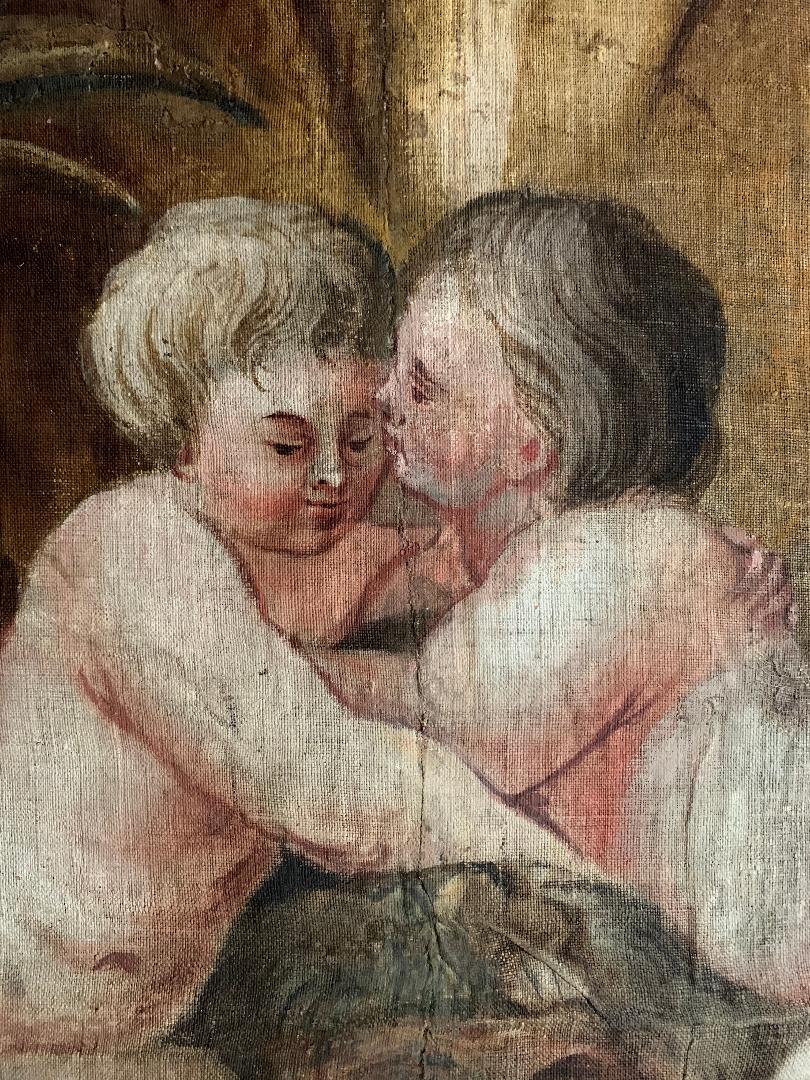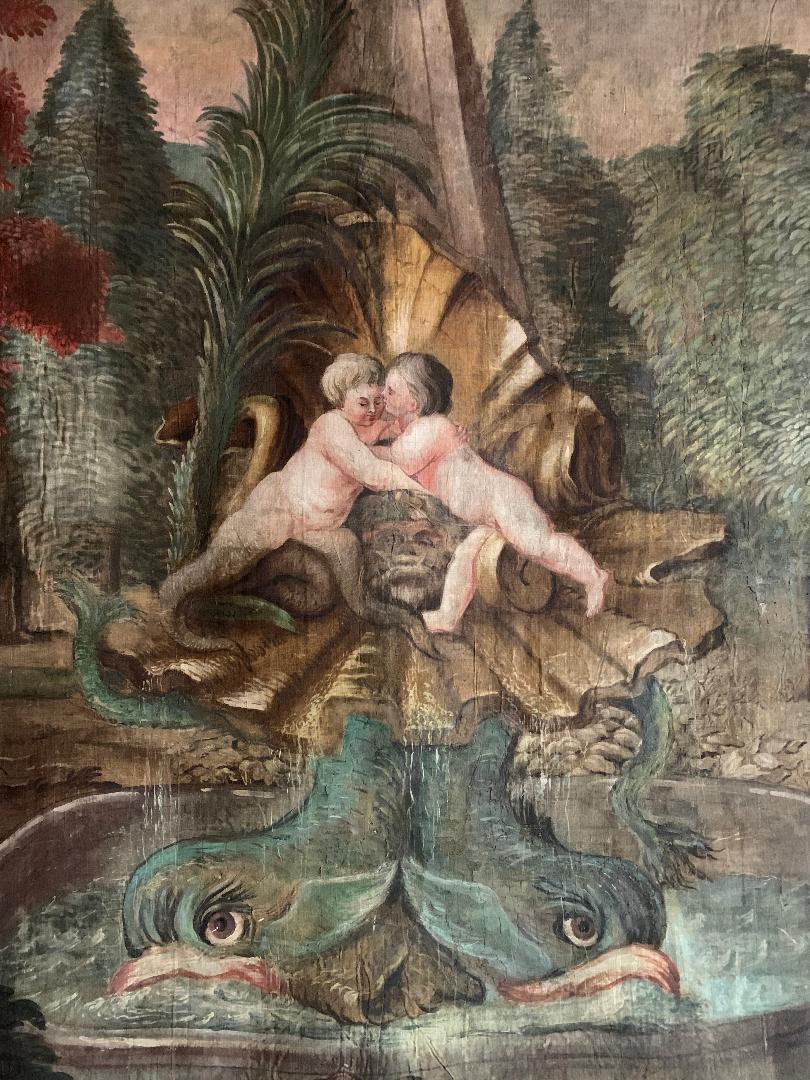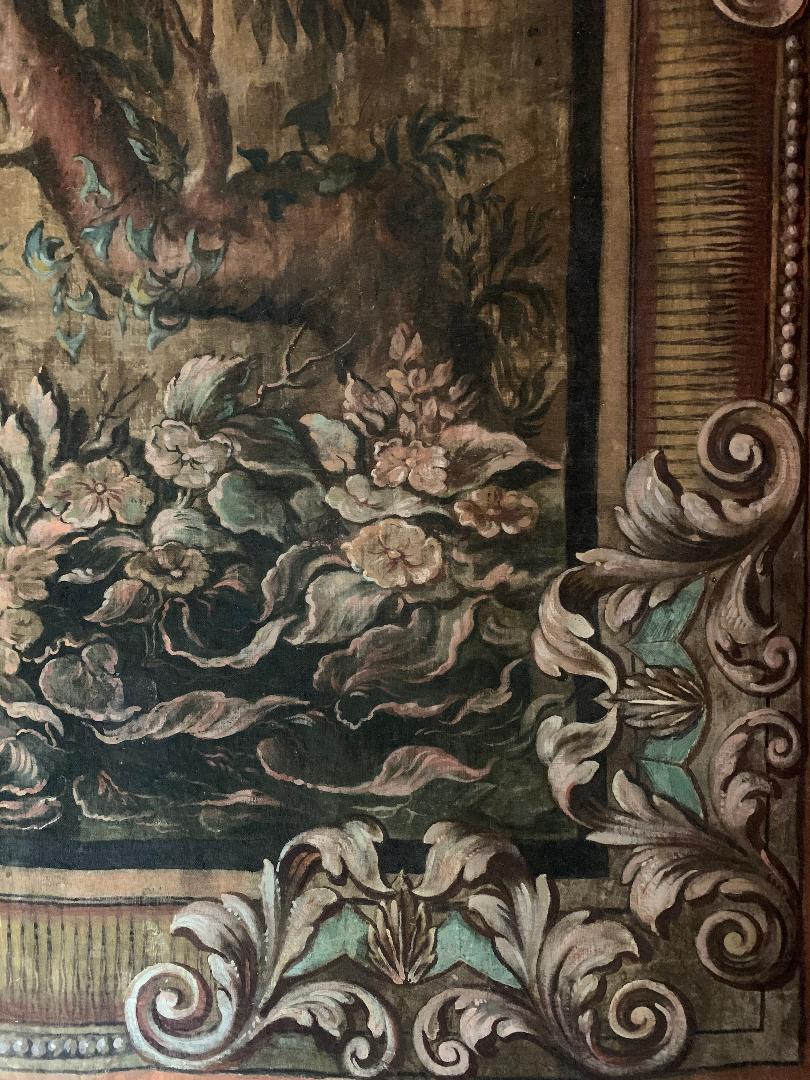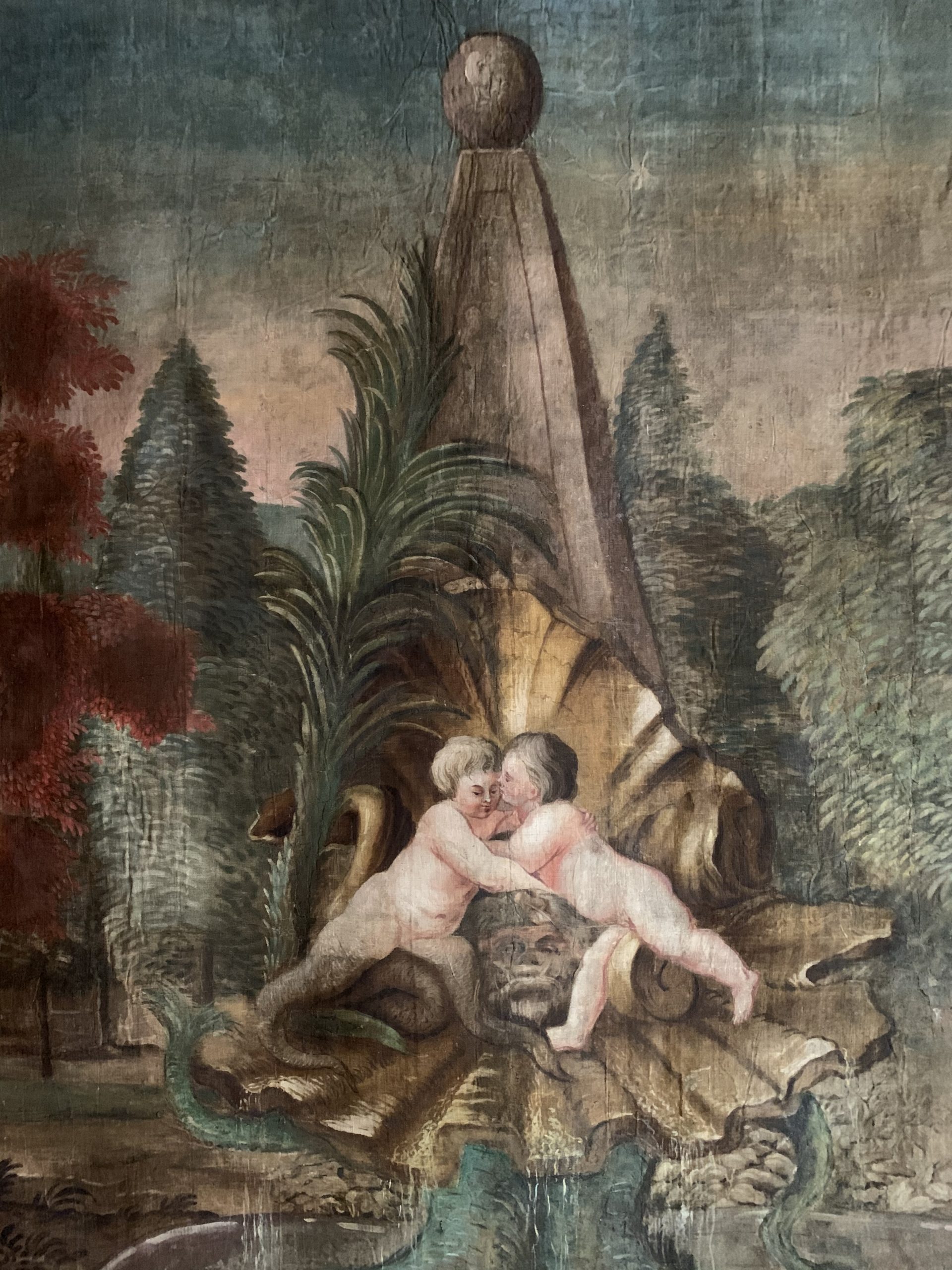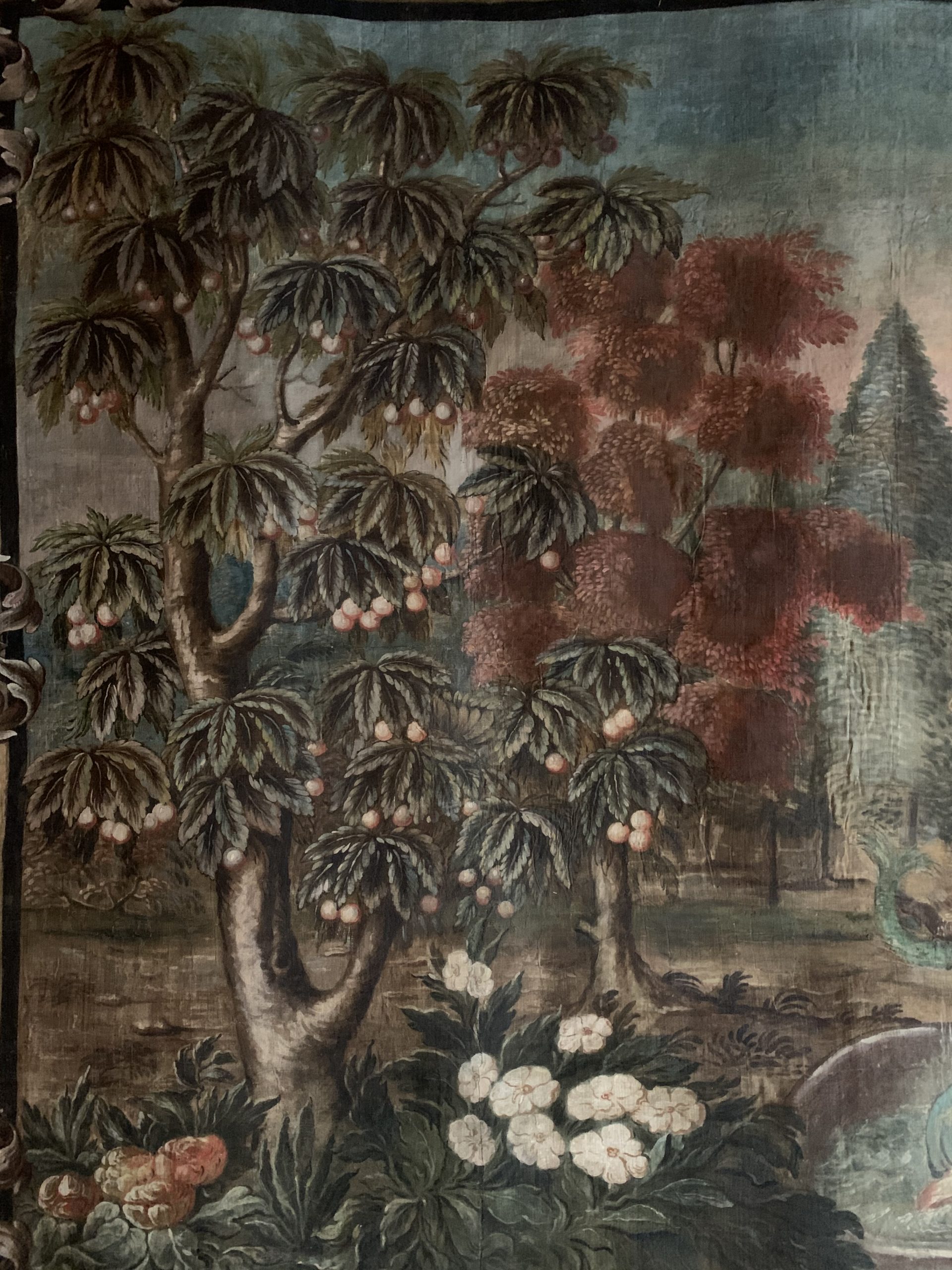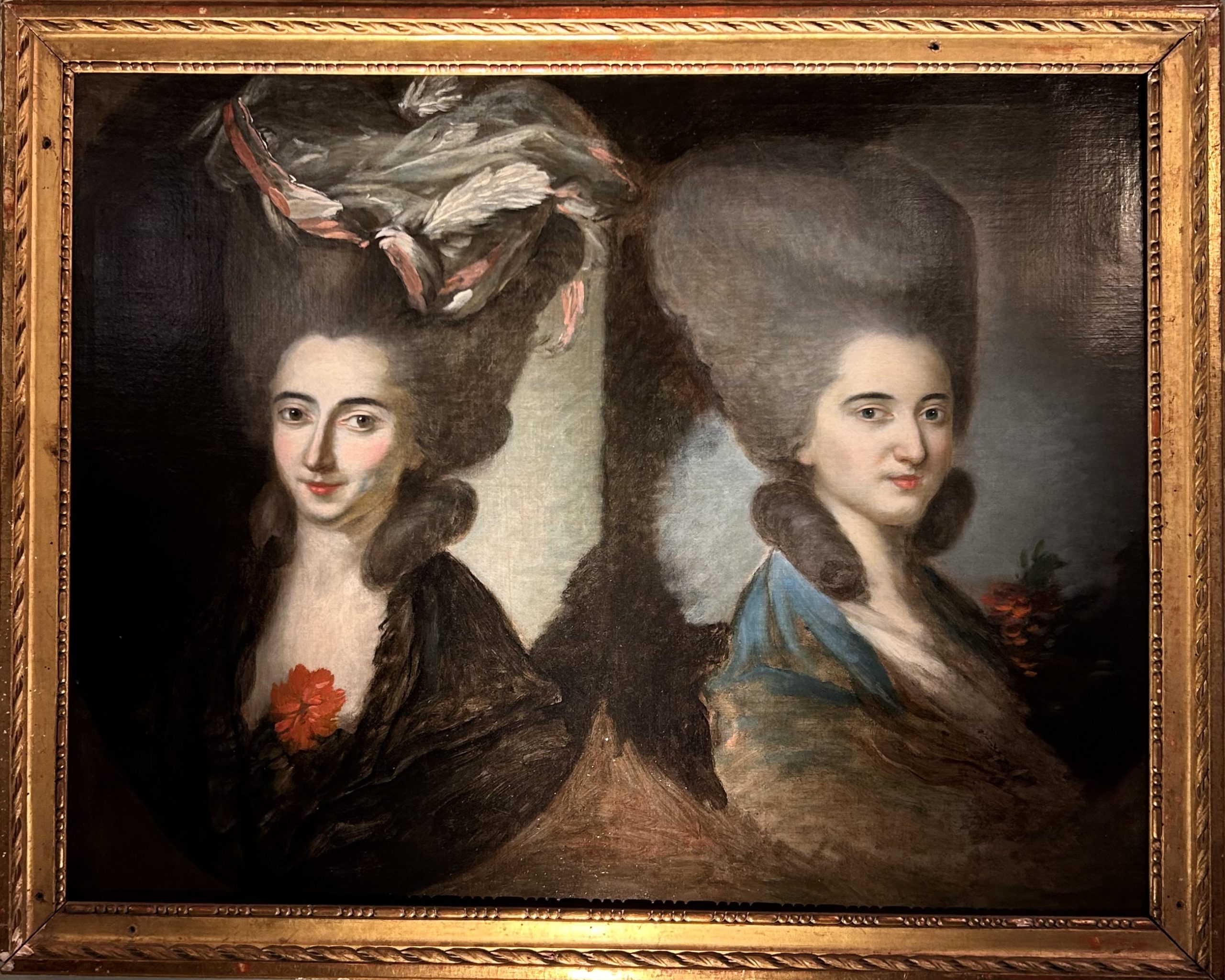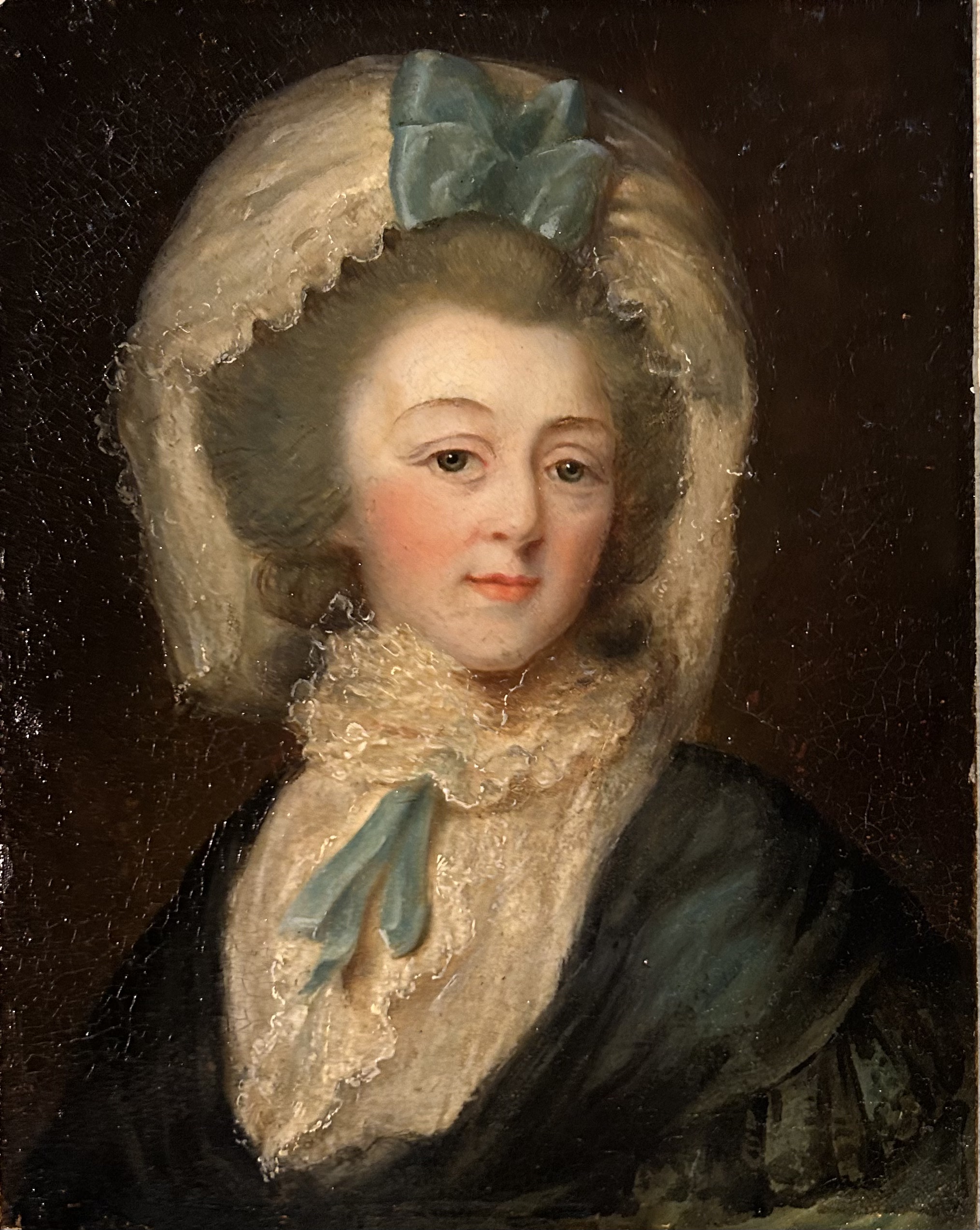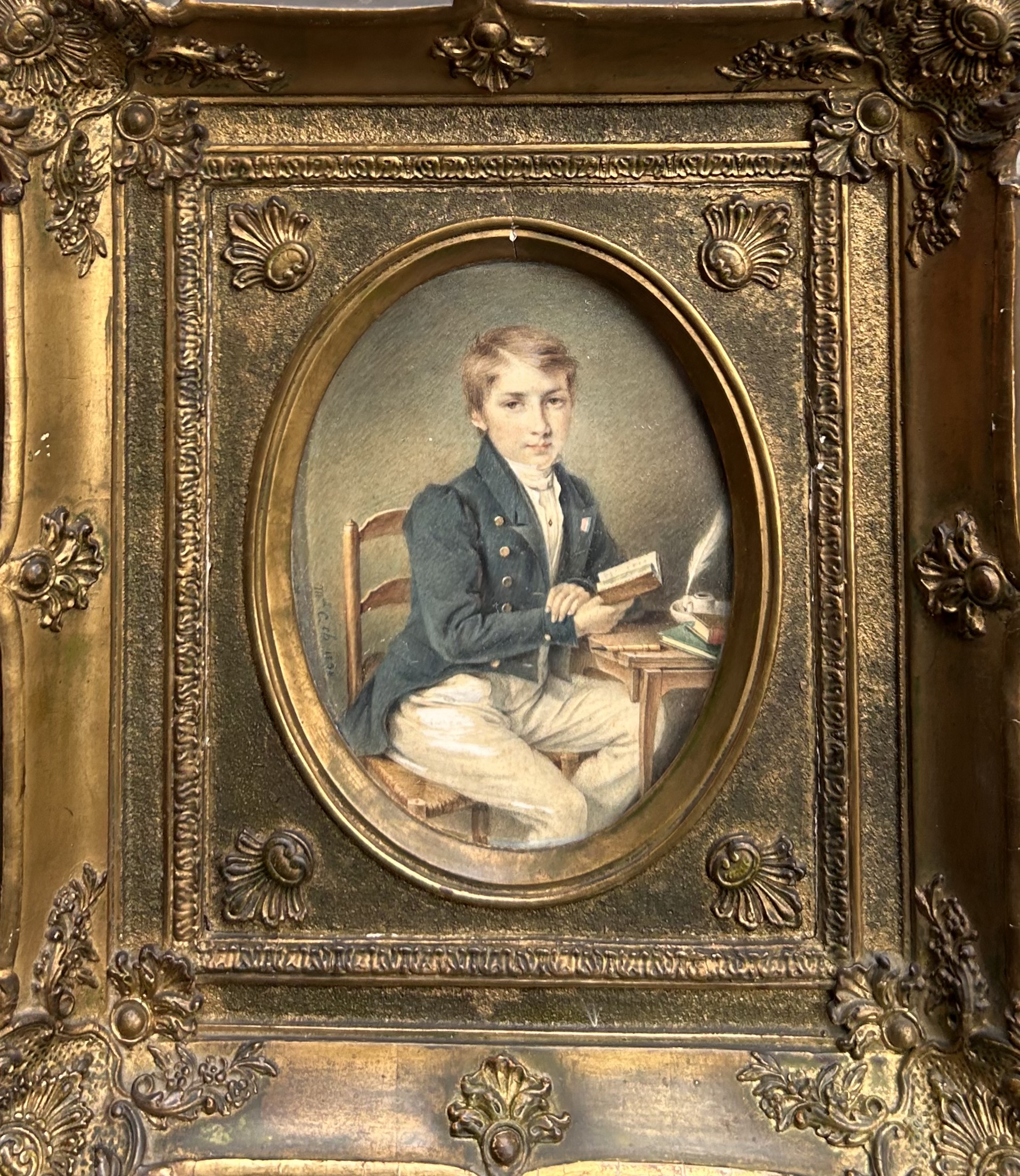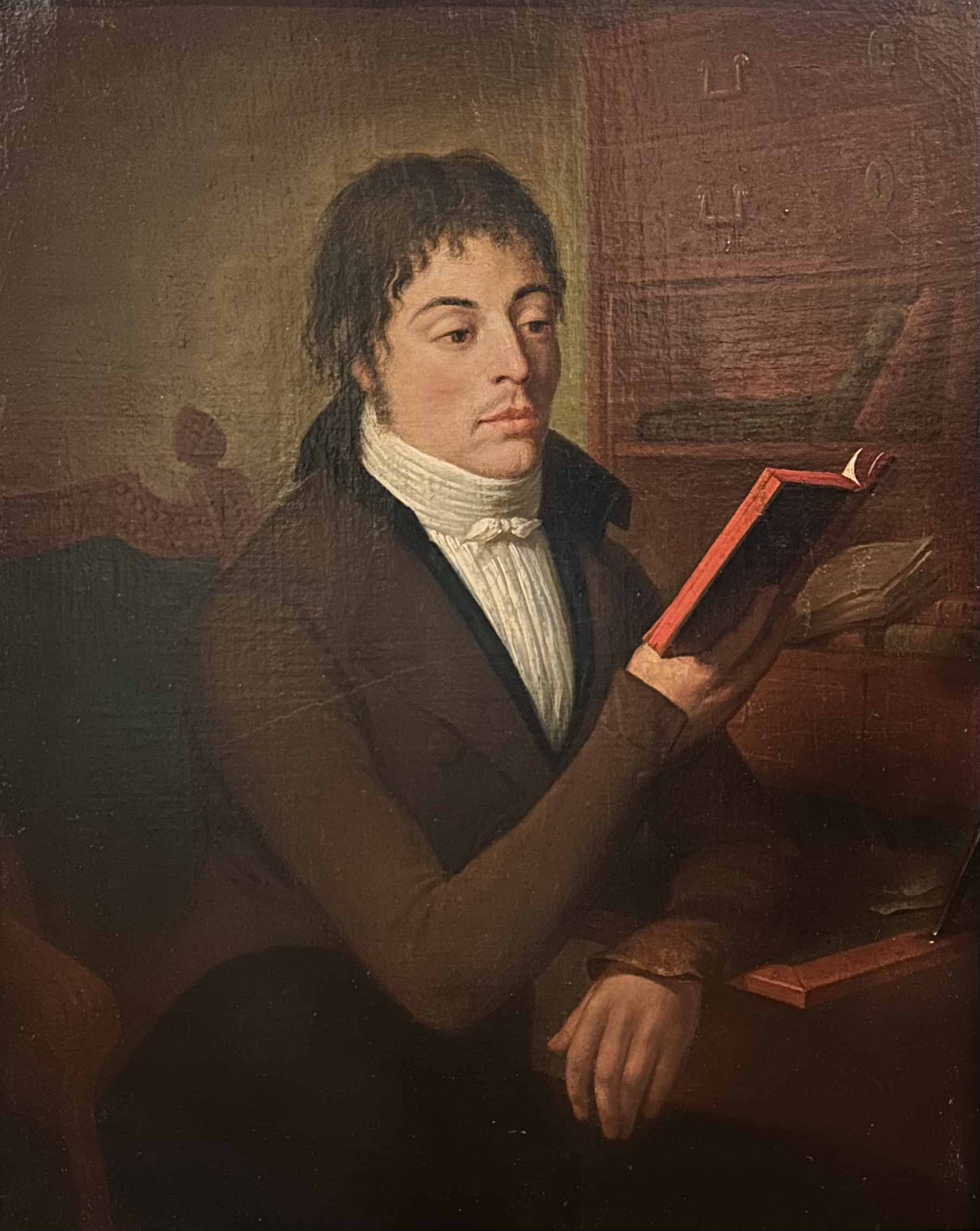Painted canvas representing a couple of Triton and Naiad children in a garden decor at the fountain of the Four-Dolphins in Aix en Provence, trompe l’oeil frame with foliage decor, restored canvas.
In 1645, Michel Mazarin, the new archbishop of Aix-en-Provence, appointed on the proposal of his brother, Cardinal Jules Mazarin, by Pope Innocent X, succeeded in having a project of extension of the city to the south. Built in 1667 at the request of Cardinal Michel de Mazarin, the fountain was first called “Saint-Michel fountain” in his honor. The baroque-style fountain with its mysterious, disturbing dolphins was created by Jean-Claude Rambot and Pierre Pavillon in 1668. The top of the obelisk was successively adorned with a golden lily, a pine cone, then a cross from Malta and again a pine cone, made by sculptor Servian after WWII. Originally a statue of St. Michael was to overcome the obelisk. It is the first fountain in Aix-en-Provence built in the middle of a public square. They were previously built against a wall because they only had a utilitarian role. It is the work of sculptor Jean-Claude Rambot that gives it its decorative interest.
130 fountains, public and private, are in the city of Aix, this is much more than in other French cities of equal size. The fountains bring charm and an undeniable quality of life to the city. Have a drink in the shade of a plane tree and in the coolness of a fountain, close your eyes and listen to the murmur of flowing water, that’s it you can dream of. The city of Aix owes a large part of its reputation to thermal waters. The abundance of hot or cold waters, already famous in Roman times for their beneficial virtues on the fertility of women, determined Caius Sextius Calvinus to establish in these places the Roman legions he commanded. This general, as well as Marius, Caesar and Augustus, while embellishing the city, brought special care to the thermal baths. The Counts of Provence made much of Aix waters and their therapeutic virtues.
End of the 17th century,
Provence, France
Height: 220 cm.
Width: 300 cm.


